Clinical Outcome of TAVI vs. SAVR in Patients with Severe Aortic Stenosis
1. Introduction
2. Methods
3. Results
4. Discussion
Author Contributions
Conflicts of Interest
References
- Windecker, S.; Okuno, T.; Unbehaun, A.; Mack, M.; Kapadia, S.; Falk, V. Which patients with aortic stenosis should be referred to surgery rather than transcatheter aortic valve implantation? Eur. Heart J. 2022, 43, 2729–2750. [Google Scholar] [CrossRef] [PubMed]
- Siontis, G.C.M.; Overtchouk, P.; Cahill, T.J.; Modine, T.; Prendergast, B.; Praz, F.; Pilgrim, T.; Petrinic, T.; Nikolakopoulou, A.; Salanti, G.; et al. Transcatheter aortic valve implantation vs. surgical aortic valve replacement for treatment of symptomatic severe aortic stenosis: An updated meta-analysis. Eur. Heart J. 2019, 40, 3143–3153. [Google Scholar] [CrossRef]
- Forrest, J.K.; Deeb, G.M.; Yakubov, S.J.; Gada, H.; Mumtaz, M.A.; Ramlawi, B.; Bajwa, T.; Teirstein, P.S.; DeFrain, M.; Muppala, M.; et al. 3-Year Outcomes After Transcatheter or Surgical Aortic Valve Replacement in Low-Risk Patients with Aortic Stenosis. J. Am. Coll. Cardiol. 2023, 81, 1663–1674. [Google Scholar] [CrossRef] [PubMed]
- Holmes, D.R., Jr.; Mack, M.J.; Kaul, S.; Agnihotri, A.; Alexander, K.P.; Bailey, S.R.; Calhoon, J.H.; Carabello, B.A.; Desai, M.Y.; Edwards, F.H.; et al. 2012 ACCF/AATS/SCAI/STS expert consensus document on transcatheter aortic valve replacement. J. Am. Coll. Cardiol. 2012, 59, 1200–1254. [Google Scholar] [CrossRef] [PubMed]
- Smith, C.R.; Leon, M.B.; Mack, M.J.; Miller, D.C.; Moses, J.W.; Svensson, L.G.; Tuzcu, E.M.; Webb, J.G.; Fontana, G.P.; Makkar, R.R.; et al. Transcatheter versus Surgical Aortic-Valve Replacement in High-Risk Patients. N. Engl. J. Med. 2011, 364, 2187–2198. [Google Scholar] [CrossRef] [PubMed]
- Sundt, T.M.; Jneid, H. Guideline Update on Indications for Transcatheter Aortic Valve Implantation Based on the 2020 American College of Cardiology/American Heart Association Guidelines for Management of Valvular Heart Disease. JAMA Cardiol. 2021, 6, 1088–1089. [Google Scholar] [CrossRef] [PubMed]
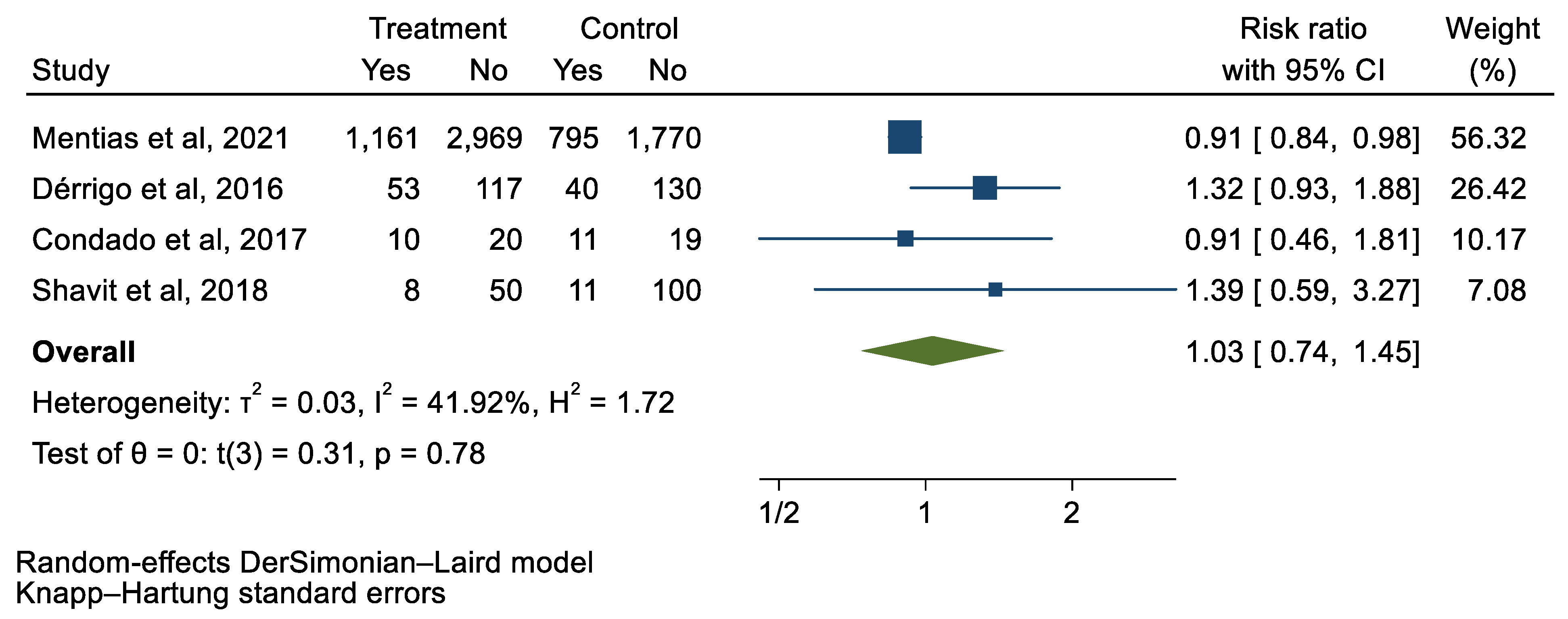
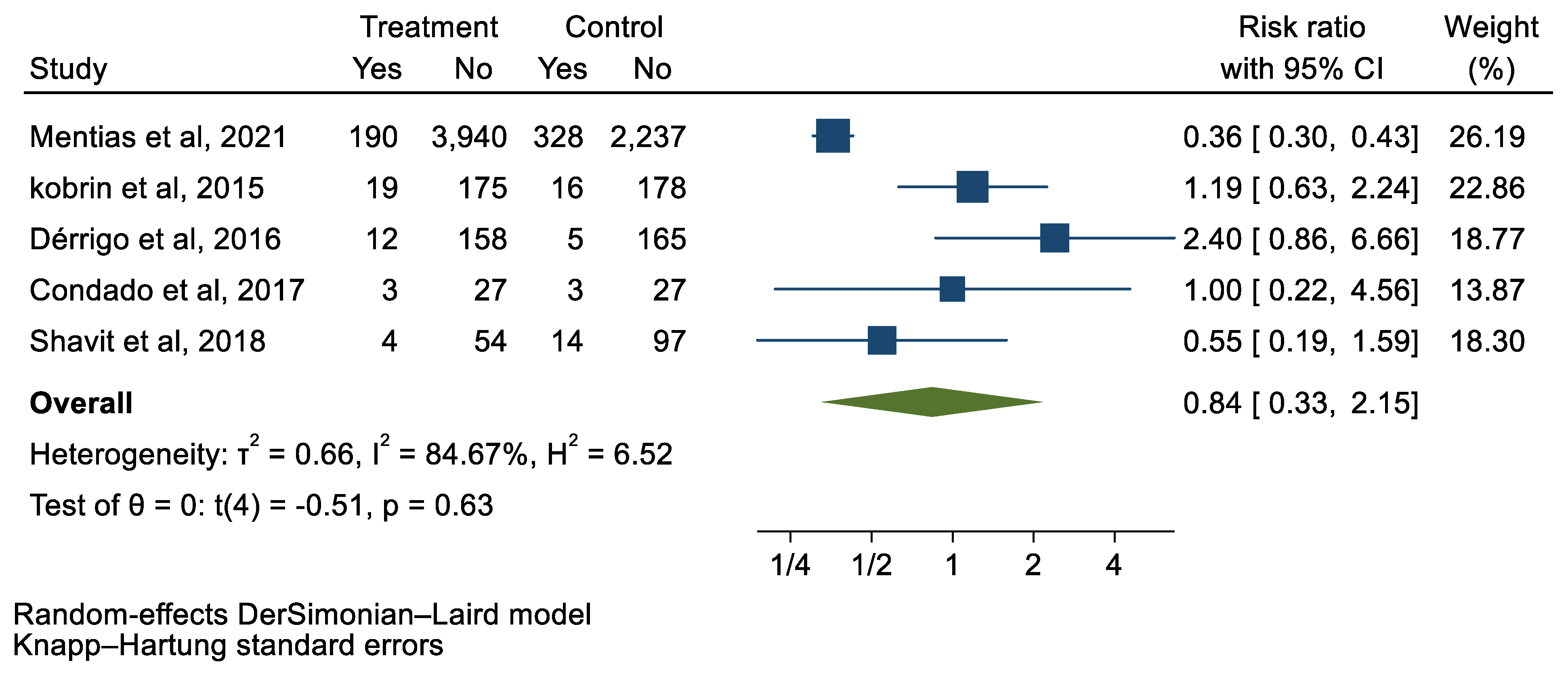
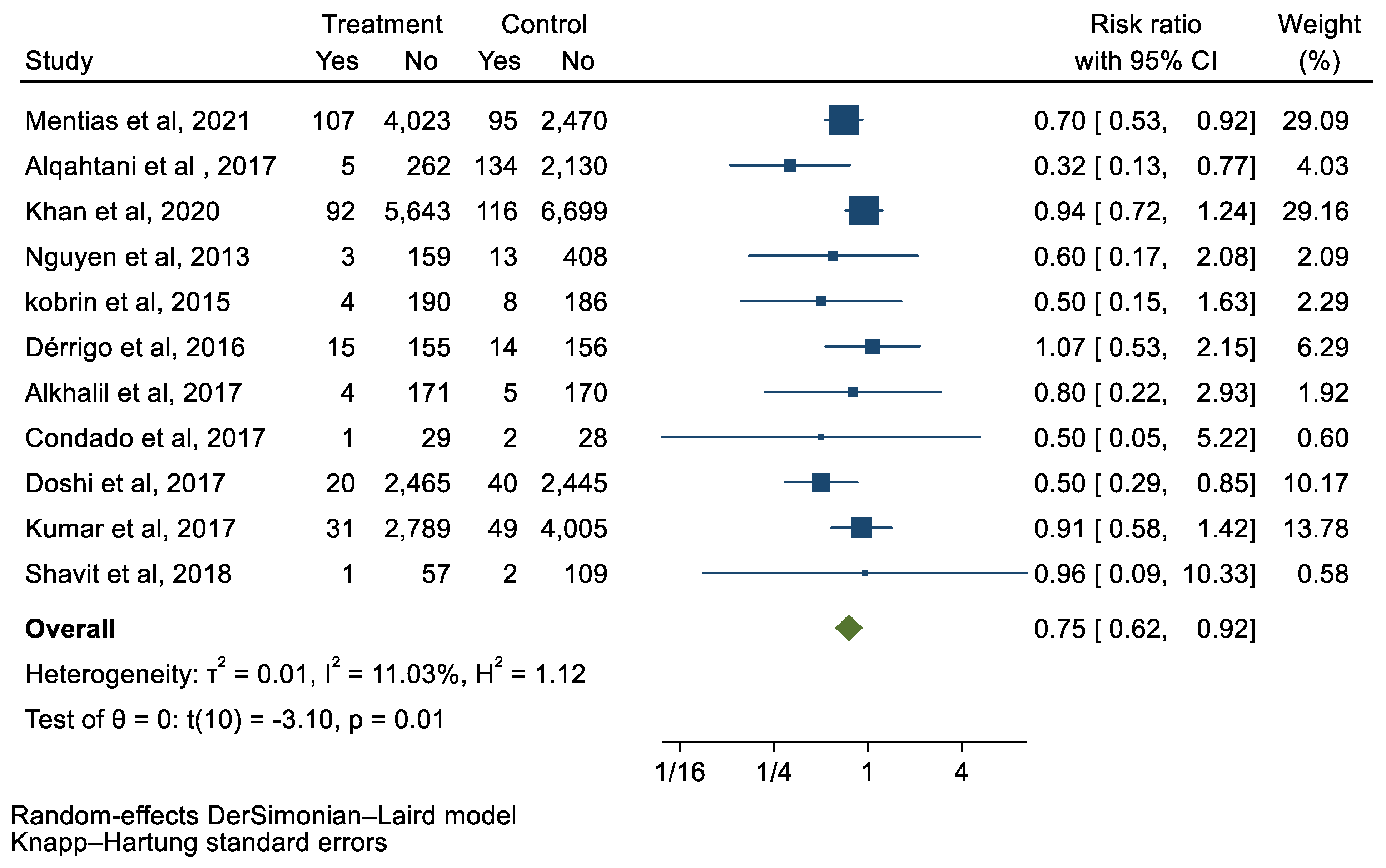
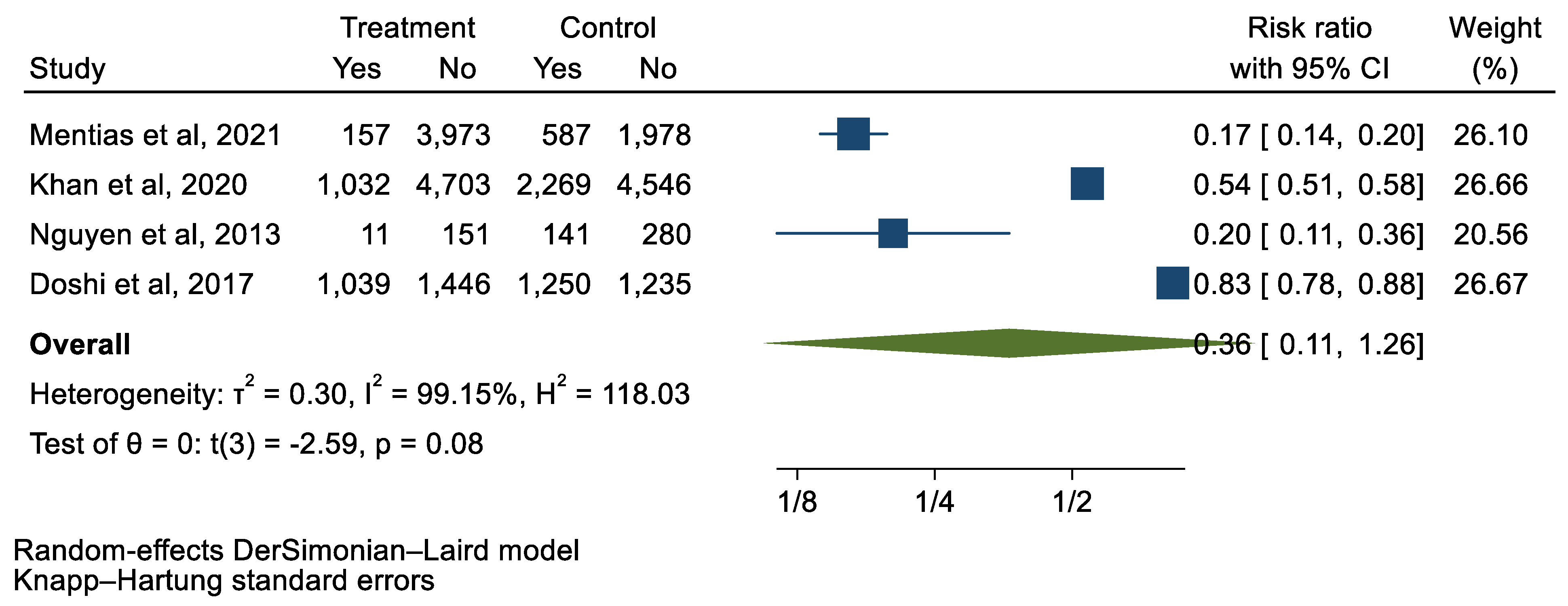
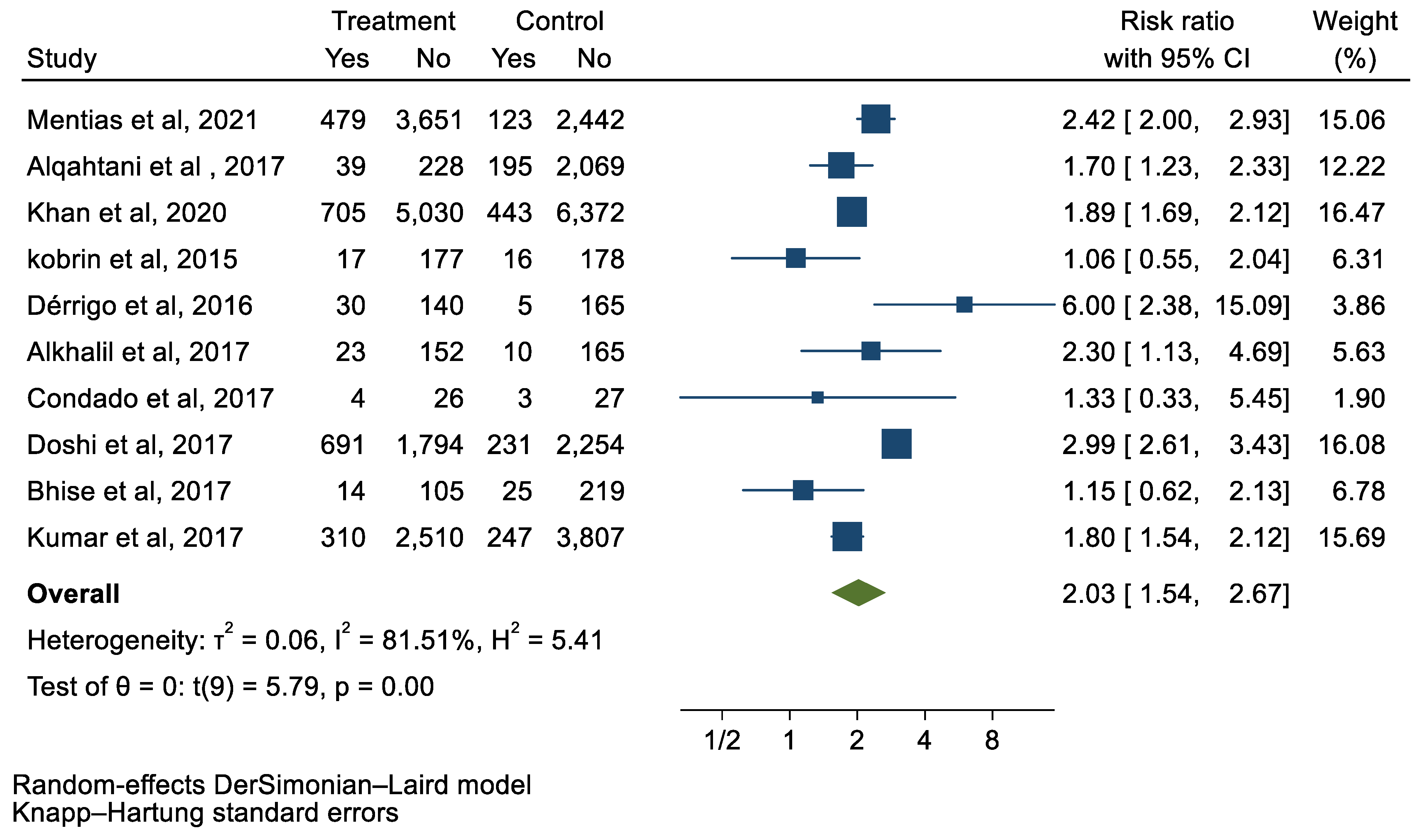

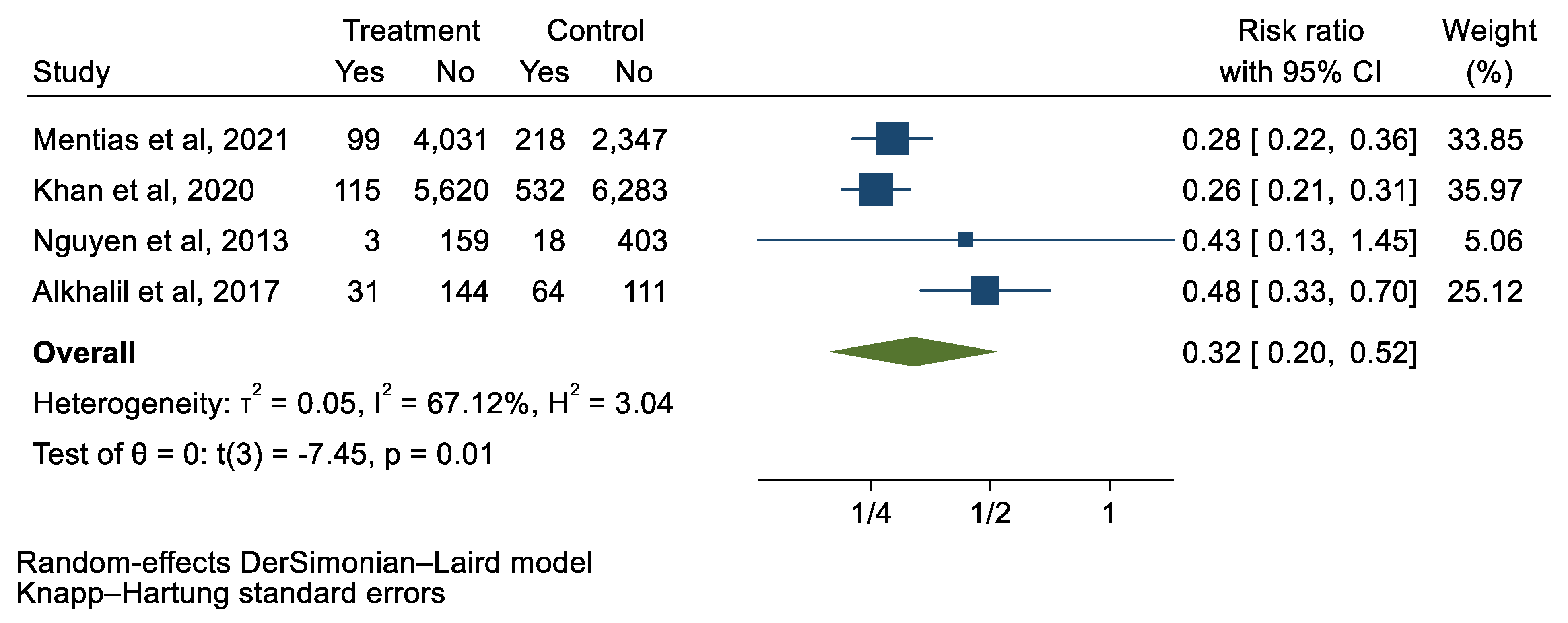
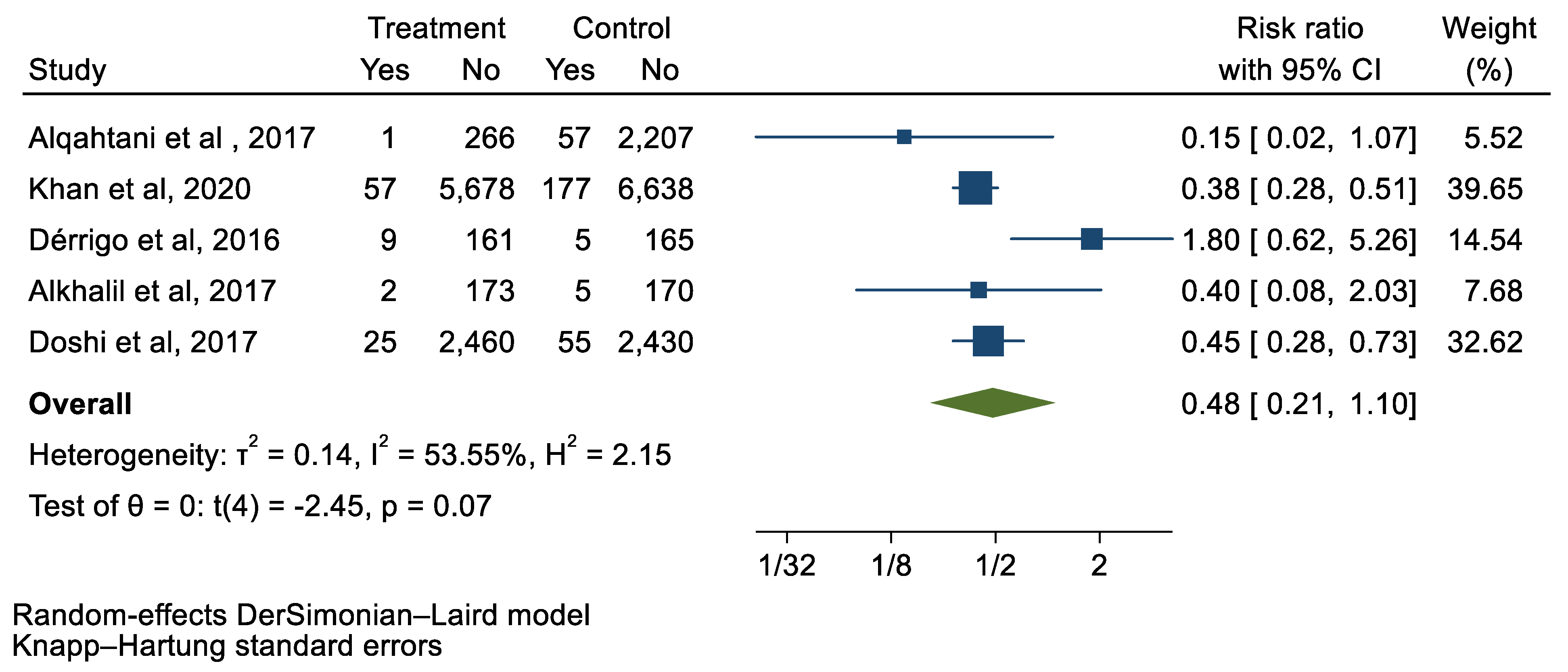
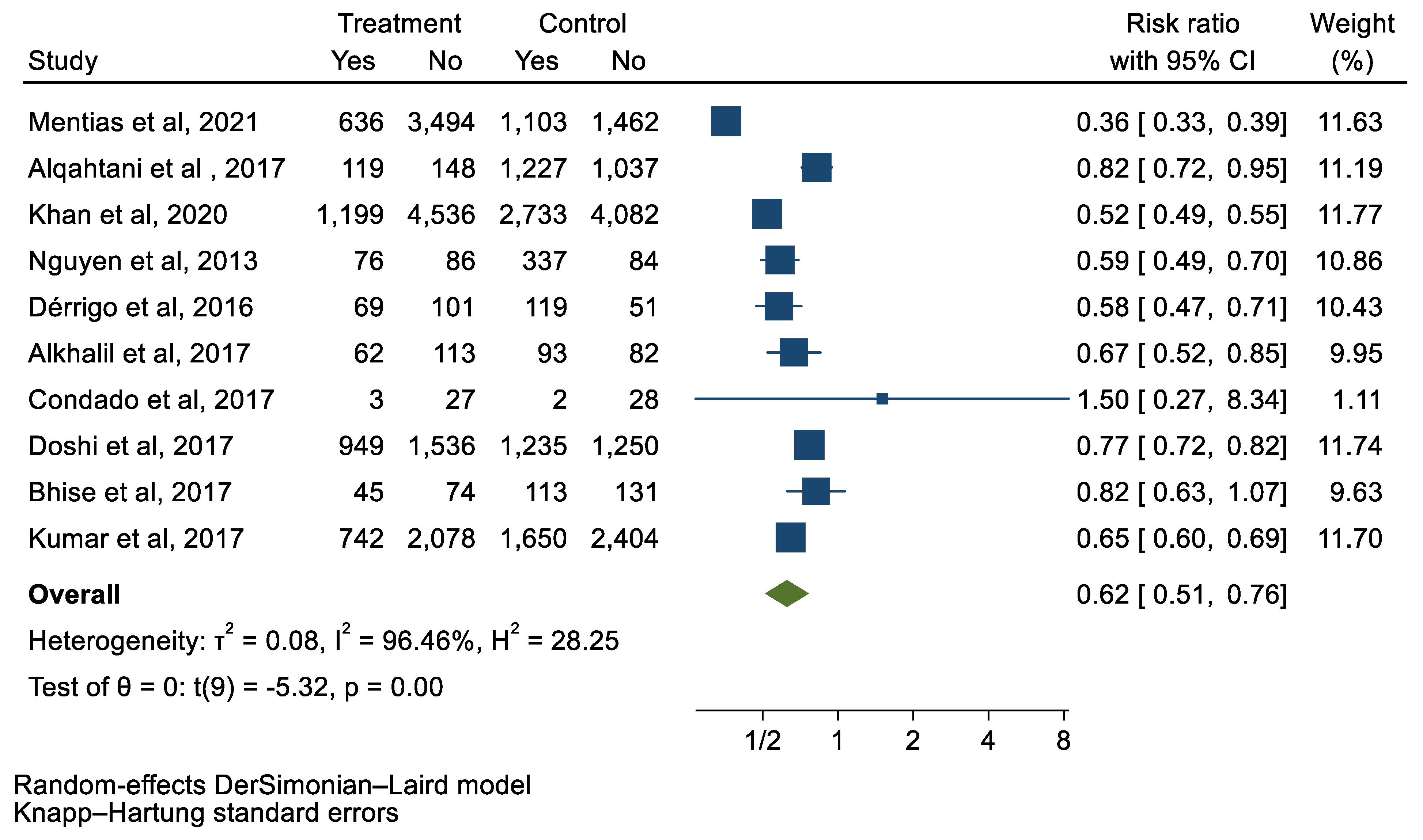
Disclaimer/Publisher’s Note: The statements, opinions and data contained in all publications are solely those of the individual author(s) and contributor(s) and not of MDPI and/or the editor(s). MDPI and/or the editor(s) disclaim responsibility for any injury to people or property resulting from any ideas, methods, instructions or products referred to in the content. |
© 2023 by the authors. Licensee MDPI, Basel, Switzerland. This article is an open access article distributed under the terms and conditions of the Creative Commons Attribution (CC BY) license (https://creativecommons.org/licenses/by/4.0/).
Share and Cite
Krittanawong, C.; Virk, H.U.H.; Hahn, J.; Wang, Z.; Al-Azzam, F.; Alam, M.; Sharma, S.; Jneid, H. Clinical Outcome of TAVI vs. SAVR in Patients with Severe Aortic Stenosis. J. Clin. Med. 2023, 12, 5236. https://doi.org/10.3390/jcm12165236
Krittanawong C, Virk HUH, Hahn J, Wang Z, Al-Azzam F, Alam M, Sharma S, Jneid H. Clinical Outcome of TAVI vs. SAVR in Patients with Severe Aortic Stenosis. Journal of Clinical Medicine. 2023; 12(16):5236. https://doi.org/10.3390/jcm12165236
Chicago/Turabian StyleKrittanawong, Chayakrit, Hafeez Ul Hassan Virk, Joshua Hahn, Zhen Wang, Fu’ad Al-Azzam, Mahboob Alam, Samin Sharma, and Hani Jneid. 2023. "Clinical Outcome of TAVI vs. SAVR in Patients with Severe Aortic Stenosis" Journal of Clinical Medicine 12, no. 16: 5236. https://doi.org/10.3390/jcm12165236
APA StyleKrittanawong, C., Virk, H. U. H., Hahn, J., Wang, Z., Al-Azzam, F., Alam, M., Sharma, S., & Jneid, H. (2023). Clinical Outcome of TAVI vs. SAVR in Patients with Severe Aortic Stenosis. Journal of Clinical Medicine, 12(16), 5236. https://doi.org/10.3390/jcm12165236






